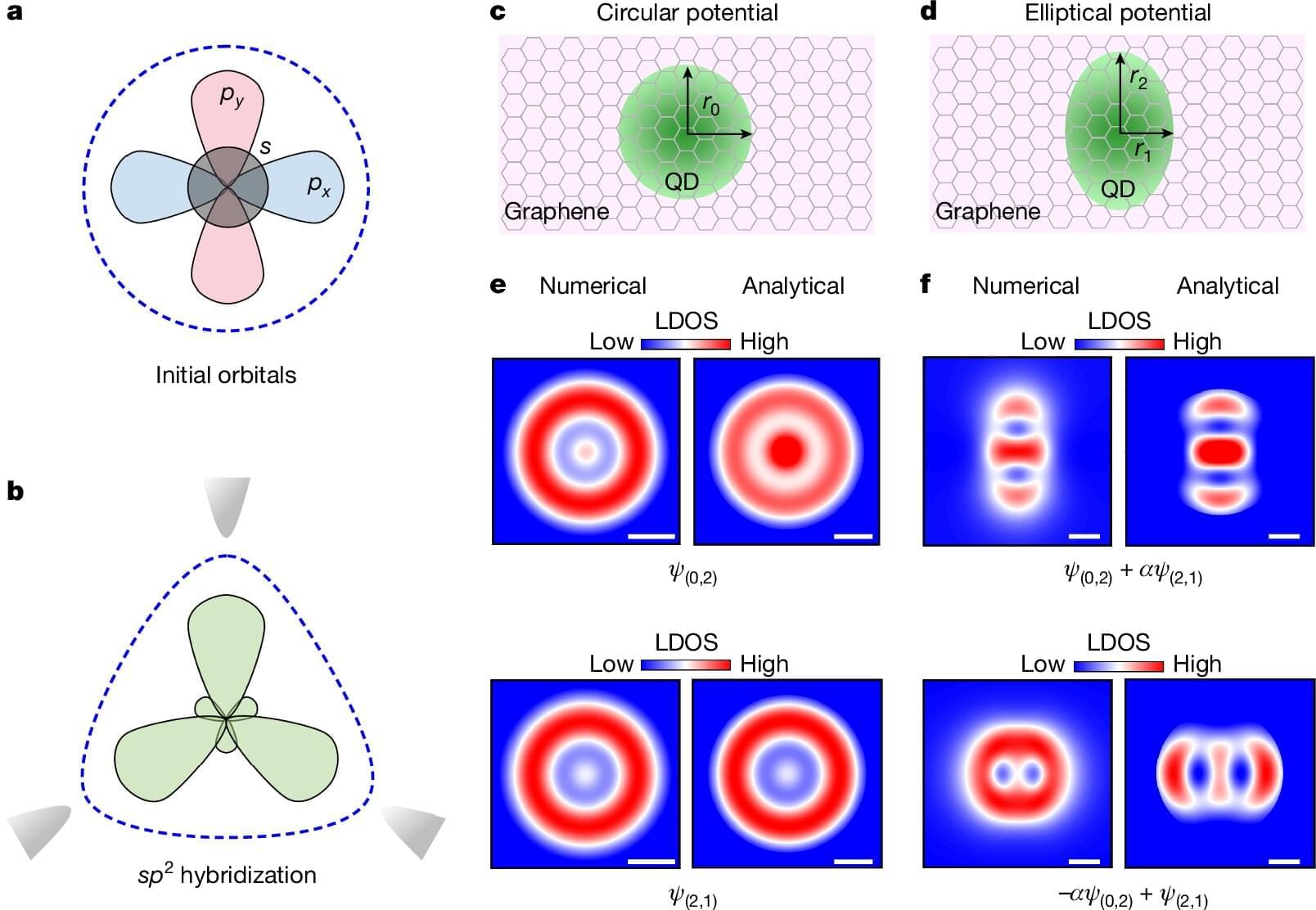A research team led by Professor Sun Qing-Feng in collaboration with Professor He Lin’s research group from Beijing Normal University has achieved orbital hybridization in graphene-based artificial atoms for the first time.
Their study, titled “Orbital hybridization in graphene-based artificial atoms” has been published in Nature. The work marks a significant milestone in the field of quantum physics and materials science, bridging the gap between artificial and real atomic behaviors.
Quantum dots, often called artificial atoms, can mimic atomic orbitals but have not yet been used to simulate orbital hybridization, a crucial process in real atoms. While quantum dots have successfully demonstrated artificial bonding and antibonding states, their ability to replicate orbital hybridization remained unexplored.
